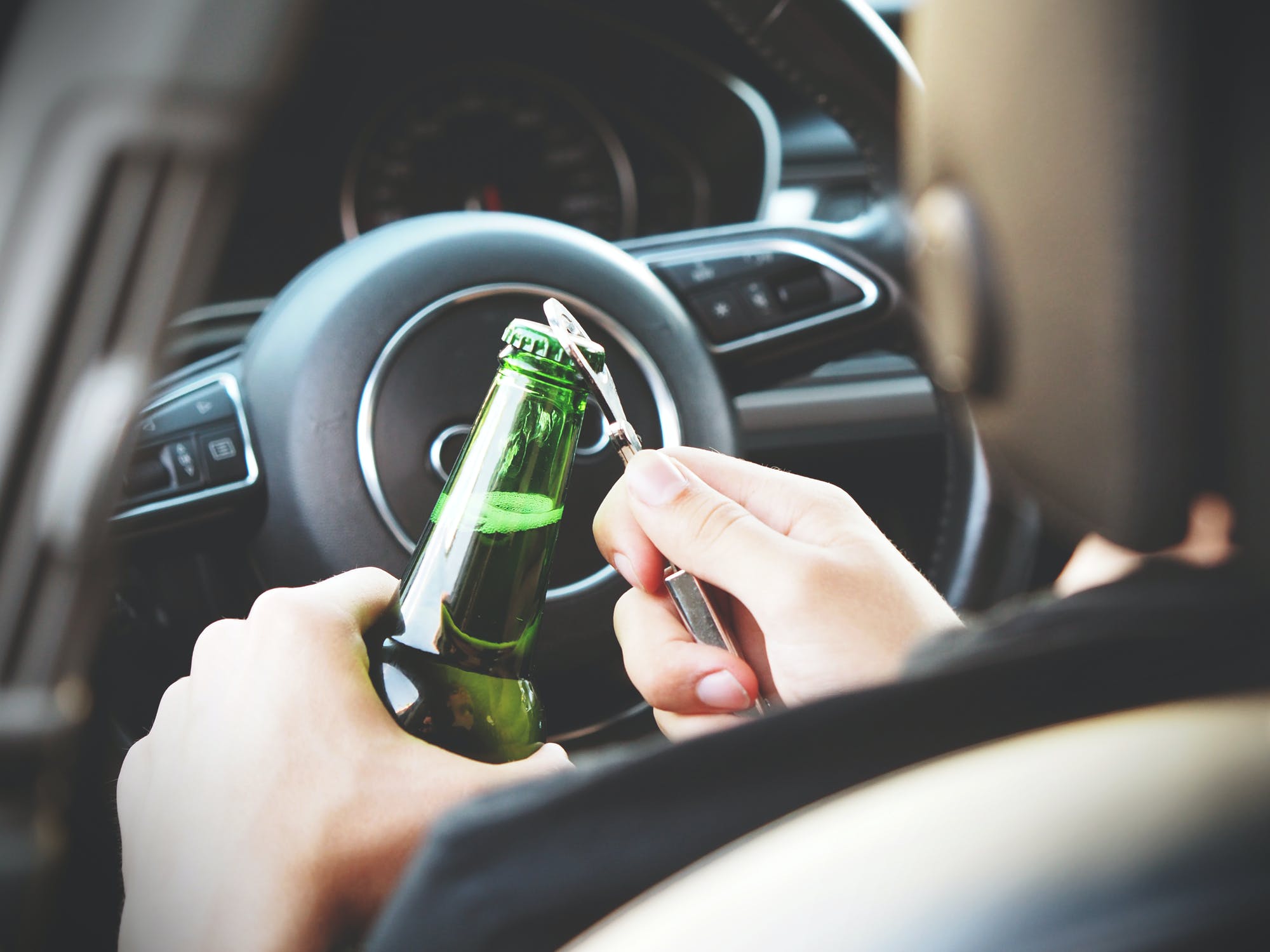
December is recognized as National Impaired Driving Prevention Month, in an effort to call attention to the dangers of driving while under the influence of alcohol. According to the National Safety Council, 38% of traffic fatalities around the Christmas holiday involved alcohol-impaired driving, as of 2019. Historically, traffic fatalities involving alcohol have usually been more common during the Christmas holiday season when compared to the annual average for a given year.
With alcohol increasing the risk of fatal traffic accidents, especially during the holidays, it’s important to take steps to educate ourselves on the dangers of drunk driving. It’s also beneficial to know when it’s time to seek help for a drinking problem, which is discussed below.
Dangers of Alcohol-Impaired Driving
As we recognize National Impaired Driving Prevention Month, it’s vital to have a conversation about the dangers of alcohol-impaired driving. You may even be surprised to learn that the risks begin at a very low blood alcohol content (BAC), so you actually don’t need to be intoxicated to be at risk from the effects of alcohol-impaired driving.
According to a report from the Centers for Disease Control and Prevention (CDC), you can expect the following degrees of impairment at various BAC levels:
- .02% BAC: At this point, your body becomes relaxed and warm, and you experience some impairment in judgment. You experience declines in visual functioning and the ability to do two tasks at once, which can interfere with driving.
- .05% BAC: With this blood alcohol level, your coordination is impaired, and you may have more difficulty steering your vehicle. You are also less responsive to emergency driving situations, such as driving safely on a snow-covered road .
- .08% BAC: Once you reach this level, your concentration, memory, perception, and information processing capacity are impaired. You also have less control over your driving speed.
- .10% BAC: At this level, you will have difficulty driving in your lane of the road and braking when needed.
- .15% BAC: Once a person reaches this level of impairment, driving becomes especially dangerous. There is significant impairment in the ability to control a vehicle, focus on the task of driving, and use visual processing skills to drive safely.
As indicated above, driving while intoxicated is dangerous and increases the risk of injuries and fatalities from motor vehicle crashes. While higher BAC levels are associated with greater impairment, the truth is that alcohol begins to negatively affect driving abilities, even before a person reaches the level of being legally impaired.
California Laws Related to Alcohol-Impaired Driving
Before diving into the specifics of when a drinking problem requires treatment, it’s helpful to learn about California’s DUI laws. In the state of California, it is illegal for a person aged 21 and over to operate a vehicle with a BAC of .08% or above. There is zero tolerance for DUI among those under age 21, and it is illegal for this age group to drive a vehicle with a BAC of .01% or above. Similarly, someone on probation for DUI is breaking the law if they drive with a BAC of .01% or above.
After the first DUI, a California driver faces up to six months in jail, as well as a fine ranging from $390 to $1,000. Upon first conviction, your driver’s license will also be suspended for six months. You will need to complete a DUI program, pay all fees, and obtain high-risk insurance before you can reinstate your license. You may face harsher penalties if your DUI occurs at a BAC of .15% or above.
After the first DUI, subsequent violations are linked to harsher penalties. You may have your license revoked for up to 5 years. You will also be expected to obtain high-risk insurance and complete a DUI program. Driving under the influence isn’t worth the legal penalties, nor is it worth the risk to your life or the lives of those around you.
So, do multiple DUIs mean I’m an alcoholic?
People often wonder if having more than one DUI means they are an alcoholic. To answer this question, it’s important to explore what it means to be an alcoholic. When people use this term, what they are actually describing is an alcohol use disorder, which is the clinical term for an alcohol addiction. A person with an alcohol use disorder will continue to drink, even when alcohol causes significant consequences in their life, because brain changes from chronic alcohol misuse make it difficult for them to stop drinking on their own.
To be diagnosed with a mild alcohol use disorder, a person must meet two diagnostic criteria. A moderate alcohol use disorder is diagnosed in those who meet four or five criteria, and a severe alcohol use disorder is diagnosed when a person meets six or more criteria.
These diagnostic criteria are as follows:
- Consuming larger amounts of alcohol than intended
- Drinking in dangerous situations
- Continuing to drink despite relationship problems from alcohol use
- Experiencing strong alcohol cravings
- Spending a significant amount of time drinking
- Being unable to fulfill duties at work or home because of alcohol consumption
- Giving up other hobbies or activities because of drinking
- Developing a tolerance so that larger quantities of alcohol are needed to experience the same effects
- Experiencing withdrawal symptoms like tremors, nausea, or sweating when going without alcohol
- Being unable to cut back on drinking, despite a desire to do so
- Continuing to drink, even when it causes a health problem or makes a health condition even worse
So, do multiple DUIs mean a person will meet the criteria for an alcohol use disorder? Anyone can make the mistake of driving under the influence of alcohol once. With just one DUI, a person may recognize that they made a mistake. If they do not have a drinking problem, they will be able to grow from the mistake and avoid repeating it. On the other hand, multiple DUIs suggest that a person is continuing to misuse alcohol, even in the face of consequences.
Furthermore, driving while under the influence of alcohol is considered drinking in a dangerous situation, which is one of the diagnostic criteria for an alcohol use disorder. A person with multiple DUIs may meet other diagnostic criteria, such as being unable to fulfill duties at work, or continuing to drink despite relationship problems. Chances are that if you have more than one DUI, your family or significant other are not too happy with you. The same can likely be said for your employer.
The bottom line is that repeated DUIs suggest that you may have developed a problem with alcohol consumption. If you’re unable to stop on your own, you might meet the criteria for an alcohol use disorder. Reaching out for alcohol treatment can help you learn strategies for managing alcohol cravings and coping with stress without turning to alcohol misuse so that you can get your life back on track.
Mission Harbor Behavioral Health offers outpatient substance use disorder treatment in the Southern California area. We have offices in both Los Angeles and Santa Barbara, and we offer multiple treatment tracks to meet a variety of needs. Contact us today to learn more or to begin the admissions process.




